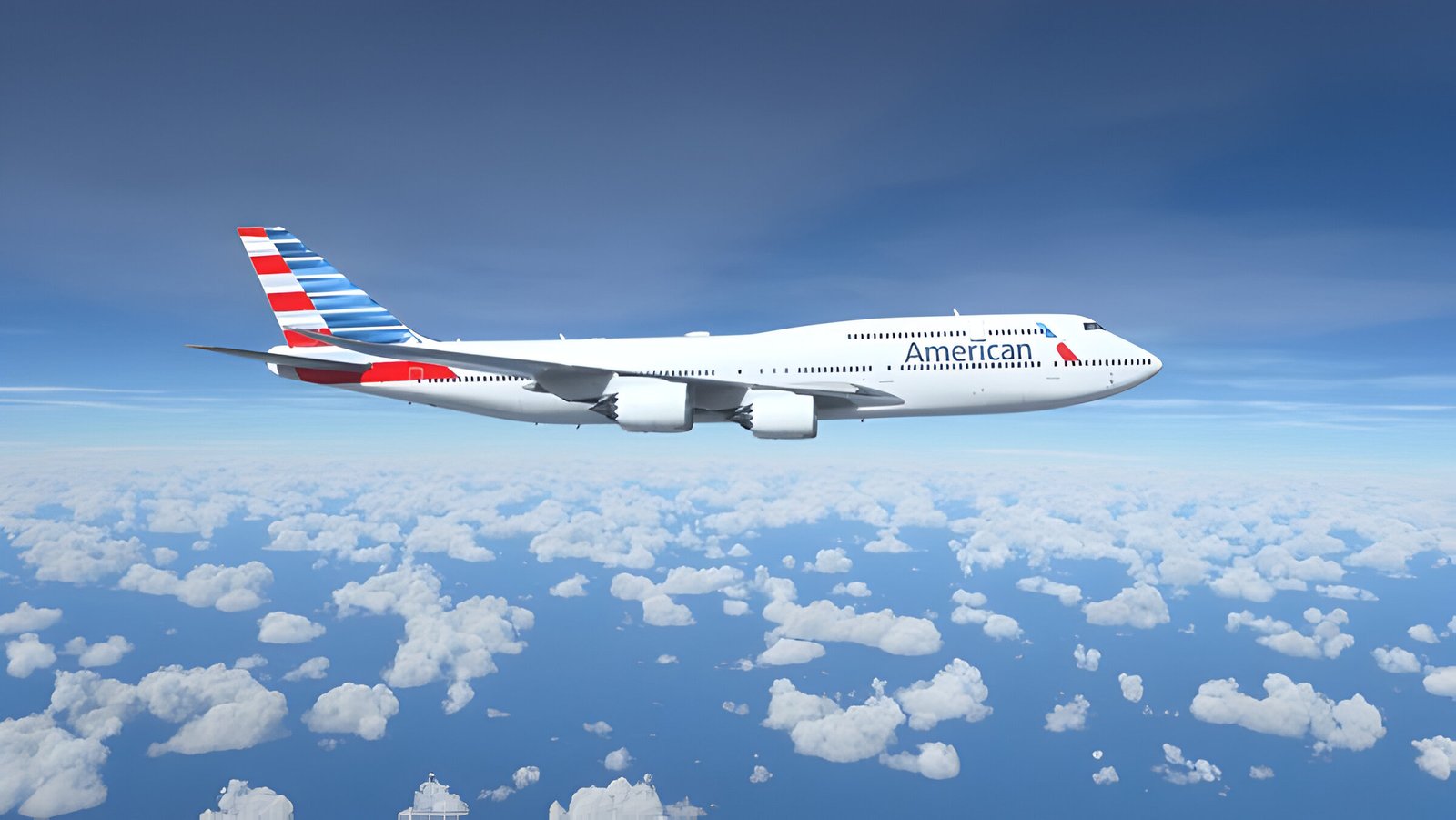Image Credit: ShutterStock
American Airlines Flight 587 crashed on November 12, 2001, becoming one of the deadliest aviation disasters in U.S. history. The Airbus A300-605R, bound for Santo Domingo, plummeted shortly after takeoff from JFK Airport, killing all 260 aboard and five on the ground. The subsequent investigation by the NTSB revealed severe issues with pilot actions and aircraft design, leading to significant safety reforms. This article examines the causes and impacts of this tragic event on aviation practices
The crash of American Airlines Flight 587 on November 12, 2001, stands as one of the deadliest aviation disasters in U.S. history. This tragic incident claimed the lives of all 260 people on board and five individuals on the ground in Belle Harbor, New York. The flight, bound for Santo Domingo, Dominican Republic, plummeted shortly after takeoff from John F. Kennedy International Airport, leaving a community in shock and raising critical questions about air safety.
Investigators from the National Transportation Safety Board (NTSB) embarked on a thorough examination of the crash. Their findings, based on data from the flight data recorder and other evidence, revealed a complex chain of events leading to the accident. The inquiry shed light on issues ranging from pilot actions to aircraft design, ultimately reshaping airline industry practices and regulations. This article delves into the circumstances surrounding the AA Flight 587 crash, its causes, and the lasting impact on aviation safety.
The Flight and Crash Details
American Airlines Flight 587: Takeoff and Initial Climb Details
American Airlines Flight 587, an Airbus A300-605R, departed from John F. Kennedy International Airport at 09:14 EST on November 12, 2001. The flight carried 260 people, including crew members, bound for Santo Domingo, Dominican Republic. Following a Japan Airlines Boeing 747 that had taken off earlier, Flight 587 was cleared for the same departure route, maintaining a safe distance of at least 4.3 nautical miles horizontally and 3,800 feet vertically.
American Airlines Flight 587: The Impact of Wake Turbulence
As the plane climbed to about 1,700 feet, it encountered what is believed to have been the wake of the preceding 747. This initial encounter caused minor pitch and roll oscillations that quickly subsided. Approximately 20 seconds later, while in a left bank, a second wake encounter occurred. The bank angle increased from 23 to 25 degrees, prompting the first officer to make aggressive control inputs.
Loss of Vertical Stabilizer
The first officer’s response to the second wake turbulence encounter proved to be excessive. He moved the rudder pedals to 100% of their travel, commanding a rudder deflection to the right. This action, combined with oscillatory control wheel movements, resulted in severe sideslip angles between 10 and 12 degrees. The extreme forces exerted on the vertical stabilizer caused it to separate from the fuselage at an airspeed of 251 knots.
American Airlines Flight 587: Analysis of the Final Moments
Following the loss of the vertical stabilizer, the pilots lost control of the aircraft. The plane entered a dramatic right sideslip, and both engines separated from the wings. The cockpit voice recorder captured the pilots’ final desperate attempts to regain control, with the first officer exclaiming, “What the hell are we into? We’re stuck in it!” and the captain urging, “Get out of it, get out of it!” Tragically, the plane spiraled downward, crashing into Belle Harbor in Queens, New York, resulting in the loss of all lives on board and five on the ground.
American Airlines Flight 587: NTSB Investigation Findings
NTSB Investigation Process
The National Transportation Safety Board (NTSB) launched an extensive investigation immediately after the crash. Over three months, investigators conducted 349 interviews and meticulously collected and reconstructed aircraft pieces. The investigation aimed to determine the probable cause of the accident and identify any contributing factors.
Analysis of Flight Data Recorder
Examination of the flight data recorder revealed crucial information about the aircraft’s final moments. The NTSB determined that the first officer made unnecessary and excessive rudder pedal inputs in response to wake turbulence encountered shortly after takeoff. These inputs created loads beyond the ultimate design capacity of the vertical stabilizer, leading to its separation from the fuselage.
Examination of Aircraft Components
Investigators closely examined the fractured composite lugs that attached the vertical stabilizer to the aircraft tail and the fractured composite honeycomb rudder. The analysis showed no evidence of pre-existing damage or fatigue cracking in these components. The vertical stabilizer’s structural performance was found to be consistent with design specifications and exceeded certification requirements.
Pilot Actions and Training
The investigation revealed that the first officer’s actions were influenced by American Airlines’ Advanced Aircraft Maneuvering Program (AAMP). This training program encouraged pilots to use rudder inputs to assist with roll control during wake turbulence encounters. However, it was found that this approach could lead to an exaggerated view of wake turbulence effects and potentially confusing responses during actual flight conditions.
American Airlines Flight 587: Causes of the Accident
Excessive rudder inputs
The National Transportation Safety Board (NTSB) determined that the primary cause of the accident was the in-flight separation of the vertical stabilizer. This occurred due to loads beyond ultimate design created by the first officer’s unnecessary and excessive rudder pedal inputs. The cyclic rudder motions after the second wake turbulence encounter resulted from these inputs, which were too aggressive and unnecessary to control the airplane.
Airbus A300 rudder sensitivity
The Airbus A300-600 rudder control system has high sensitivity, characterized by light pedal forces and small pedal displacements. This design makes the aircraft susceptible to potentially hazardous rudder pedal inputs at higher airspeeds. The system couples a rudder travel limiter that increases in sensitivity with airspeed, a characteristic of variable stop designs, with the lightest pedal forces among transport-category aircraft evaluated by the NTSB.
American Airlines Flight 587: The Impact of Wake Turbulence
The first officer had a tendency to overreact to wake turbulence, taking unnecessary actions including excessive control inputs. His initial control wheel input in response to the second wake turbulence encounter was too aggressive, and his initial rudder pedal input was unnecessary for controlling the airplane. This response led to severe sideslip angles and extreme forces on the vertical stabilizer.
Pilot training deficiencies
American Airlines’ Advanced Aircraft Maneuvering Program (AAMP) ground school training encouraged pilots to use rudder to assist with roll control during recovery from upsets, including wake turbulence. This training may have caused the first officer to have an unrealistic and exaggerated view of wake turbulence effects, erroneously associating such encounters with the need for aggressive roll upset recovery techniques. Additionally, pilots were not adequately trained on the effects of rudder pedal inputs on the Airbus A300-600 at high airspeeds and the operation of the airplane’s rudder travel limiter system.
Aftermath and Safety Improvements
The crash of American Airlines Flight 587 had a profound impact on the aviation industry, leading to significant changes in pilot training, aircraft design, and safety protocols. The National Transportation Safety Board’s (NTSB) investigation findings prompted a series of improvements aimed at preventing similar accidents in the future.
American Airlines Flight 587: Changes to Pilot Training Programs
The NTSB recommended increased pilot training on the dangers of rudder manipulation, which airlines and the U.S. Federal Aviation Administration readily agreed to implement. American Airlines’ Advanced Aircraft Maneuvering Program underwent revisions to address the misconceptions about wake turbulence effects and aggressive roll upset recovery techniques. Pilots received enhanced training on the Airbus A300-600 rudder control system and its operation at high airspeeds.
American Airlines Flight 587: Aircraft Design Modifications
Airbus faced scrutiny regarding the A300-600 rudder control system’s high sensitivity. The company initially expressed caution about hasty changes to the foot pressure needed to move the rudder, citing potential adverse consequences. However, the investigation revealed multiple incidents where the vertical stabilizer experienced loads exceeding design limits, prompting a reevaluation of the aircraft’s design assumptions.
Impact on the aviation industry
The accident led to a broader understanding of structural protection limits when making full or abrupt flight control inputs at airspeeds below maneuvering speed. This revelation prompted industry-wide discussions on aircraft design and pilot training. The crash also highlighted the need for manufacturers to be more proactive in addressing recurring issues and sharing safety-related information.
Memorial and remembrance
A memorial designed by artist Freddy Rodriguez was erected in Rockaway Park, Queens, to honor the victims. Annual ceremonies commemorate the disaster, featuring a reading of the victims’ names and a moment of silence at 9:16 a.m., the estimated time of the crash. The memorial, angled to face the Atlantic in the direction of the Dominican Republic, serves as a poignant reminder of the lives lost and the ongoing impact of the tragedy on the affected families and communities.
Conclusion
The tragic crash of American Airlines Flight 587 has had a lasting impact on aviation safety. It brought to light critical issues in pilot training, aircraft design, and response to wake turbulence. The accident’s investigation led to significant changes in how airlines train their pilots, especially regarding rudder use and wake turbulence encounters. It also prompted a fresh look at aircraft design, particularly the sensitivity of rudder control systems.
The lessons learned from this disaster continue to shape aviation practices today. The improvements in pilot training and aircraft design that came out of this tragedy have made air travel safer for everyone. While the memory of Flight 587 remains a somber reminder of the risks inherent in aviation, it also stands as a testament to the industry’s commitment to learn from accidents and continuously improve safety standards.
Also Read: amelia earhart plane photo
FAQs
- What happened to American Airlines Flight 587? The flight crashed shortly after takeoff from JFK Airport on November 12, 2001, killing all 260 people on board and five individuals on the ground.
- What was the primary cause of the Flight 587 crash? The crash was caused by the in-flight separation of the vertical stabilizer due to excessive and unnecessary rudder inputs by the first officer.
- How did wake turbulence contribute to the crash? The aircraft encountered wake turbulence from a preceding flight, which prompted excessive control inputs from the first officer, leading to structural failure.
- What did the NTSB investigation reveal about the pilot’s actions? The investigation found that the first officer’s excessive rudder pedal inputs were unnecessary and contributed to the aircraft’s loss of control.
- What were the main findings regarding the aircraft’s design? The Airbus A300-600’s rudder control system was found to be highly sensitive, which made the aircraft susceptible to extreme loads from aggressive rudder inputs.
- What changes were implemented in pilot training following the crash? Pilot training programs were revised to address the dangers of excessive rudder manipulation and improve understanding of wake turbulence effects.
- How did the crash impact aircraft design? The sensitivity of the Airbus A300-600’s rudder control system was scrutinized, leading to discussions about design modifications to prevent similar incidents.
- What memorials were established for the victims of Flight 587? A memorial in Rockaway Park, Queens, was dedicated to the victims, featuring annual ceremonies to honor their memory.
- What were the key recommendations made by the NTSB? The NTSB recommended enhanced training on rudder use and wake turbulence, and emphasized the need for improvements in aircraft design to handle extreme control inputs.
- What is the legacy of the American Airlines Flight 587 crash? The crash led to significant advancements in aviation safety, including better pilot training and aircraft design, aimed at preventing similar tragedies.





One Comment